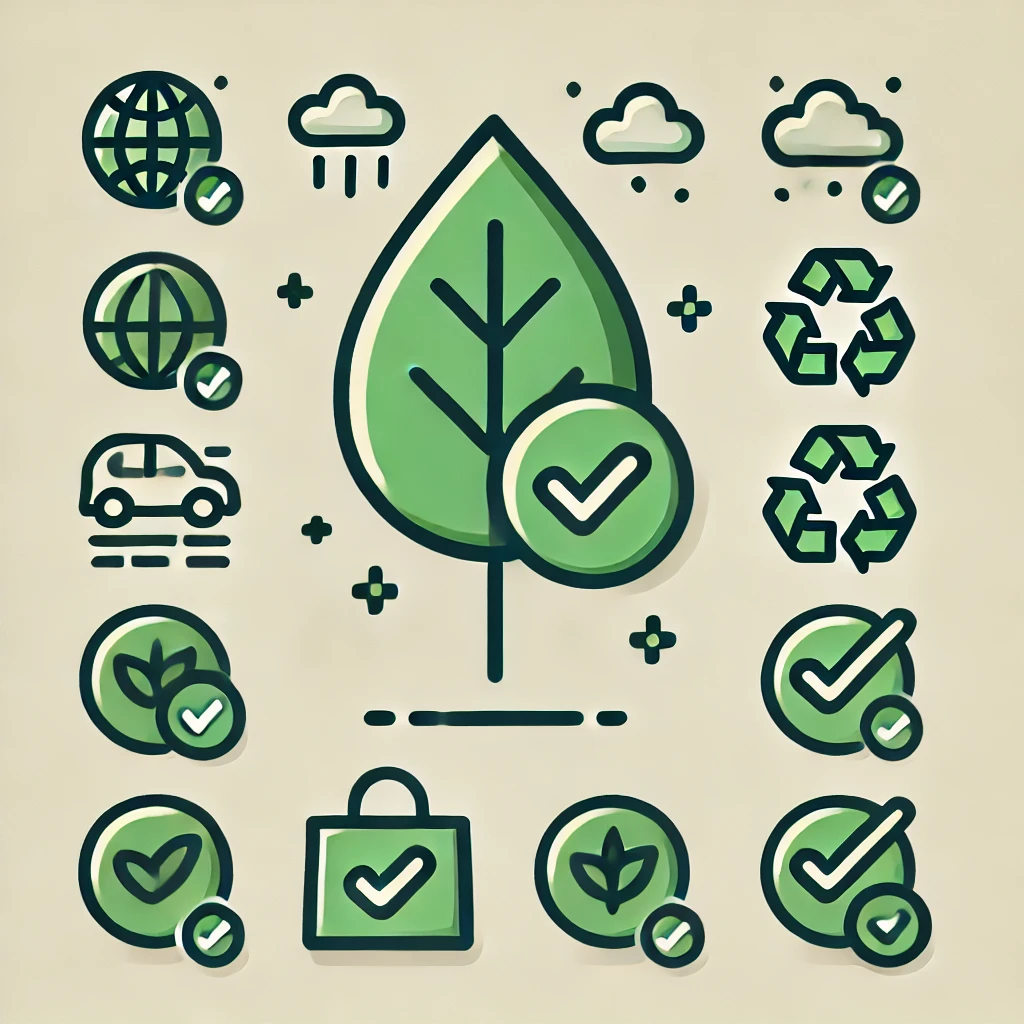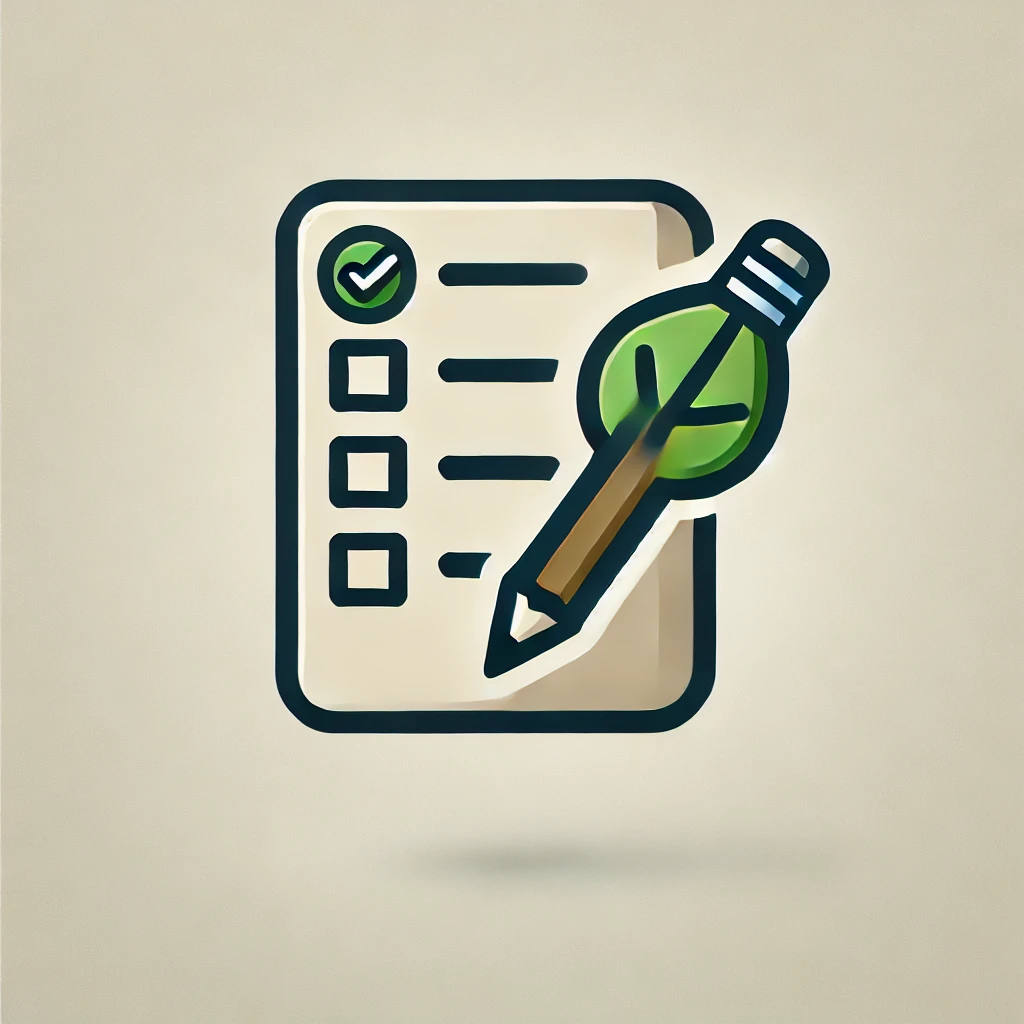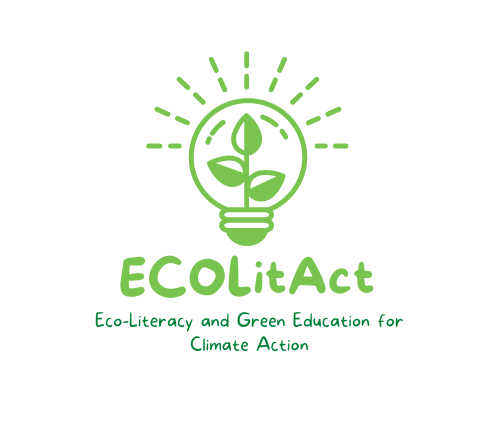Learning Objectives | Real-World Scenario – Carbon Footprint Reduction | Consumer Choices and Your Carbon Footprint | Create an Action Plan | Final Quiz | Europass
This module aims to empower you to take your knowledge of climate change to the next level. You will learn advanced strategies to not only understand but actively counter climate change impacts. The lesson will focus on applying sustainable practices, understanding the science behind climate change, and developing real-world solutions. By the end of the module, you’ll be equipped with the skills to lead climate initiatives in your community and inspire others to take action.
Learning Objectives
By the end of this lesson, you will be able to:
👣 Define carbon footprint and understand its role in climate change.
🗝️ Analyze the key causes of carbon emissions in everyday life.
🌿 Develop strategies to reduce your carbon footprint and promote sustainable practices.
💪 Create an action plan to implement carbon footprint reduction strategies in your community.
This course will take approximately 1 hour to 1,5 hours.
Real-World Scenario – Carbon Footprint Reduction
This learning scenario uses real-world case studies of households with high carbon footprints. By examining their lifestyle habits, you’ll explore practical steps that can be taken to reduce emissions, such as using energy-efficient appliances, adopting a plant-based diet, and opting for public transportation.
Some people place great pressure on the environment. Many households place themselves in the top 1% of polluters in the EU. Their carbon footprints are 22 times larger than the safe limit of 2.5 tonnes. On average, people in this group emit greenhouse gasses equivalent to 55 tonnes of CO₂ per person per year. What are the main causes of CO₂ emissions? How can you reduce your carbon footprint? In the following scenario, you will learn about the main causes and the best solutions to reduce CO₂ emissions.
Below you will encounter four different fictional private households. You will learn about the family members, their professions, diets, travel, and consumption habits. Familiarise yourself with these cases.
In the second step, you will explore informational material on carbon footprints and how to lower them which you will use in the final step to identify effective ways in which to reduce the fictional families carbon footprints.
The Four Cases
Now, it is time to move on to exploring the carbon footprint. What is a carbon footprint? Why is carbon dioxide harmful? How can we lower emissions? Take a look at the slides below and read through the material.
Now you know…
- How specific lifestyle changes, such as reducing energy consumption and switching to sustainable food choices, can significantly lower your carbon footprint.
- The importance of understanding the carbon footprint of everyday products and services.

Action point:
Reflect on your daily habits.
How do your travel choices, energy consumption, and food purchases contribute to your carbon footprint?
Discuss these with a peer or family member, and start brainstorming specific changes you can make to reduce your impact.
Consumer Choices and Your Carbon Footprint
In this activity, you will reflect on your own everyday shopping decisions and how they impact the environment. You will explore sustainability strategies like choosing local and seasonal products, avoiding excessive packaging, and supporting eco-friendly businesses.
Take a look at the slides below to explore strategies for individuals to reduce their carbon footprint.
Now you know…
- How your consumer choices impact the environment, from carbon emissions to biodiversity loss.
- Practical steps to make eco-friendly purchases, like choosing local and seasonal products.
- The benefits of sustainable shopping, including reducing waste and supporting ethical businesses.

Action point:
You can use a carbon footprint calculator to analyse your own shopping habits and create a plan to improve your sustainability!
Create an Action Plan
What you will do:
In this activity, you will choose one of the four fictional households presented in the learning scenario. You will analyze their carbon footprint based on the provided habits and characteristics, then propose strategies to reduce their emissions.
Instructions:
- Select one of the fictional families (e.g., Family One, Family Two, etc.).
- Use the Ecological Footprint Calculator and the data provided in the scenario to calculate the family’s carbon footprint.
- Identify key areas where emissions are high (e.g., frequent flying, high meat consumption, energy use).
- Brainstorm practical actions that can reduce the family’s footprint (e.g., switching to renewable energy, reducing air travel, adopting sustainable diets).
- Summarise your Action Plan including the following points based on the targeted key areas and practical actions. How have the family’s habits and behaviours changed through your identified actions? You can use the Ecological Footprint Calculator again to identify the impact of these practical actions on their carbon footprint.
What will you gain:
This activity will help you understand how different lifestyles contribute to carbon emissions and provide you with the tools to create effective carbon reduction strategies.

Final Quiz – test your knowledge!
You have now explored the core principles of climate activism and how to take real-world action. This quiz will challenge your understanding and readiness to apply what you’ve learned in a practical context. Answer the multiple-choice questions to evaluate your take of the material and to further sharpen your activism skills!
Great job!
You have now completed the Practitioner level lesson on climate change. If you would like to learn more about climate change and read the extra resources, please check the Expert level lesson of climate change.
Showcase your new skills with Europass
You have just completed another step in your learning journey. The skills and knowledge you have gained are valuable – not just for countering climate denialism and contributing to a greener future, but also for opening doors to new opportunities for you! A great way to do this is by adding them to your Europass profile.
Europass is a European Union initiative that helps individuals communicate their skills, qualifications, and experiences clearly and effectively. It consists of several documents, including the Europass CV, which is recognised across Europe and beyond, making it easier for learners to present their qualifications to potential employers or educational institutions.
If you don’t yet have a Europass profile, creating one takes just a few minutes. Get started here. And if you need a little help to set things up, you can take a look at this video tutorial.
For the lesson you have just completed, we encourage you to add the following skills:
- Comprehensive understanding of climate change and related issues
- Analytical reflection on climate change impacts and global consequences
- Awareness of differences between “climate” and “environment”
- Application of climate change knowledge to mitigation strategies
